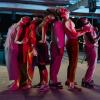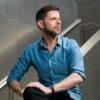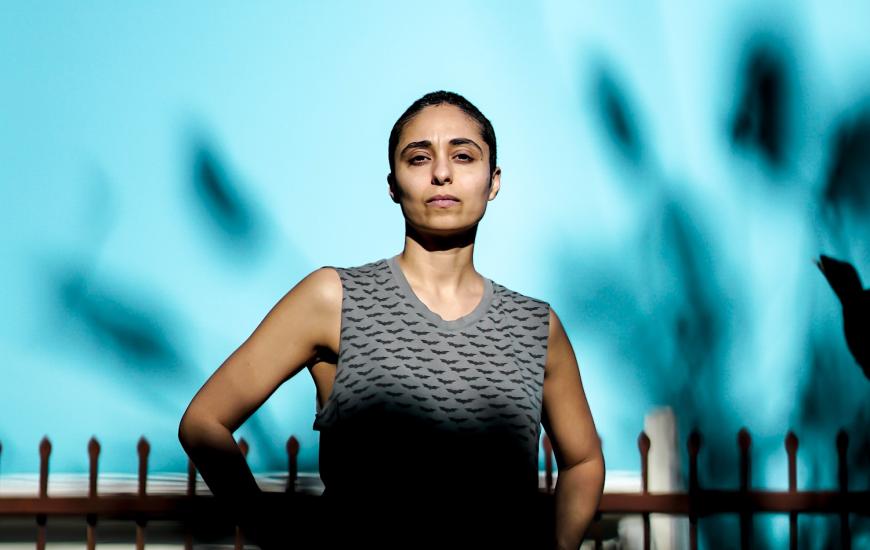
Since founding her dance company Ate9 in 2012 in Seattle, Danielle Agami has been nothing short of a terpsichorean force of nature. Decamping for Los Angeles the next year, Agami, who was born in Israel in 1984 and was a member of the Tel Aviv-based Batsheva Dance Company from 2002 to 2010, is also a purveyor of Ohad Naharin’s hugely popular Gaga.
A technique Naharin created and developed more than two decades ago, Gaga is a physically daring movement language that trains the body while correspondingly connecting to pleasure. After leaving Batsheva — where Agami also served as artistic director of Batsheva Dancers Create as well as the troupe’s rehearsal director — she moved to New York in 2011, heading Gaga USA. In addition to teaching, the artist has staged the works of Naharin, including mounting dances for Alvin Ailey American Dance Theater and the Juilliard School.
Along the way, this Gaga ambassador received the 2016 Princess Grace Award for Choreography and the 2018 Virginia B. Toulmin Fellowship for Women Leaders in Dance. In addition, she has created a number or works for her own troupe, among them, Calling Glenn, from 2017, its title alluding to Glenn Kotche, the drummer for the rock band Wilco, with The New York Times’ Brian Seibert writing, “Ms. Agami speaks her borrowed tongue with considerable skill.”
The artist also enjoys collaborating, notably with MacArthur Fellow Yuval Sharon, who has famously created works in cars, a parking structure, and a train station. Founder and artistic director of The Industry and currently artistic director of Detroit’s Michigan Opera Theatre, Sharon, while interim artistic director of Long Beach Opera, tapped Agami to direct and choreograph Arnold Schoenberg’s masterpiece, Pierrot lunaire (“Moonstruck Pierrot”).
Part of a double bill with Kate Soper’s Voices From the Killing Jar, this co-production between LBO and the Los Angeles Philharmonic, debuts Aug. 14–15 at The Ford, a bucolic 1,200-seat amphitheater now under the stewardship of the Phil. I caught up with the eternally busy Agami by phone, our conversation encompassing her process, her working relationship with Sharon, and her recent venture into filmmaking.
Schoenberg’s Pierrot lunaire transformed music forever when he created 21 surreal dreamscapes for a solitary, enigmatic female performer to traverse. The composer, in effect, crafted a vocal character somewhere between cabaret and expressionism. What kind of research did you do? Did you look at choreographer Glen Tetley’s 1967 work, which was considered revolutionary at the time; will your Pierrot — sung here by American soprano Kiera Duffy — be in white-face; and will she also be asked to dance?
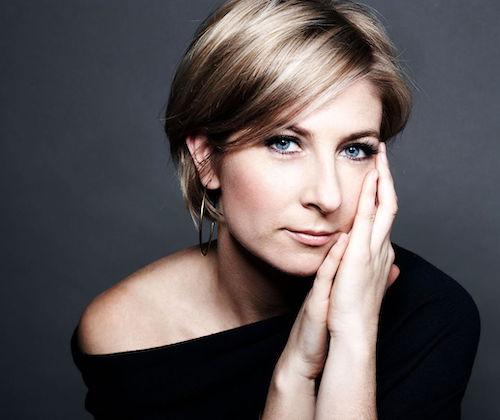
I didn’t do any research. It’s not how I work. I listen to the music and I understand what needs to be done visually. I like the coincidental stories that I find that maybe will meet the original intention of the creator, but I don’t try to learn too much about the creator. I just give it a contemporary perspective according to what is relevant right now and to me and to people that live around me here. And no, [Duffy] won’t be in white face and she’s not asked to move.
Okay, so no research, but what is your process — both in directing and choreographing?
I have to find a way to join the music but I didn’t want to cater to the music. There’s a balance between catering to it and joining it. That was the research of the composition, the pairing of the scenes with the songs.
Choreography is being a director, and since I’ve been the director of Ate9 since inception, this is not new for me to direct. But without Yuval being there, that’s given me a better sense of freedom and control, which I’m used to in doing my work. Nothing about this is new, but I’m trying to balance musicians with the expectations of opera and ritual, and my belief in performance is that it’s about generosity. The fact that I feel all artists, especially dancers, work so hard, so how to have a stage that completely balances the disciplines and the respect to each discipline, that’s the research I’m doing in my head.
You’ve worked with Yuval Sharon quite a bit, beginning with his “headphone” opera, Invisible Cities, which was staged at Union Station in 2013. You also choreographed Debussy’s Pelléas et Mélisande, a fully staged production with the Cleveland Orchestra, which he directed in 2017, and about which The New York Times’ David Allen wrote, “Mr. Sharon and his team have produced a Pelléas that, precisely by remaining faithful to the spirit, story and music of Debussy’s work, is an object lesson in how an orchestra can stage — properly stage — an opera.” And the two of you worked together again on Meredith Monk’s Atlas, which bowed at Walt Disney Concert Hall in 2019. How would you describe your relationship with Yuval and what have you learned from him?
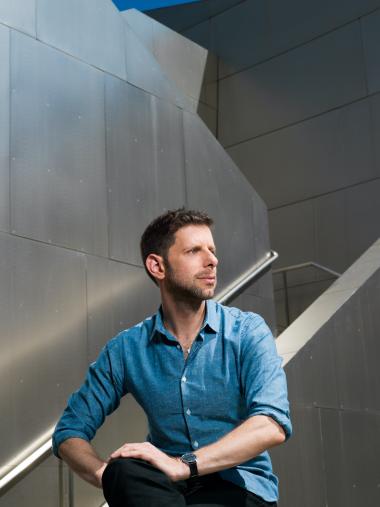
First of all, he’s my friend. We share so much in common and enhance each other’s thoughts and processes, and it’s a process that I’m doing now without Yuval, so I don’t know if Yuval matters. He initiated this project, but I know for sure that everything Yuval exposed me to I would never be exposed to [because] opera is not my go-to; it’s not something that really entertains me. Even after all these years, I usually don’t go to watch opera. It’s a thing. It’s a paradox. It’s almost like it’s more a task and a challenge, not a passion of mine.
It is very easy for Yuval and me to be in the same room at any moment. There is never a disagreement. Yes, we can disagree and then we keep layering until we find a solution. But we’re very different in the way we approach making work. I come into the studio with zero knowledge with what I want to make [while] he has it mapped out — he has a plan. I’m not one to do that.
In that way, that’s why we work well. He takes the load off the structure and I can be the fire. In this case — him being gone — I worked in the order of events I like to work in, starting with the unknown and chaos, then the structure reveals itself later in the end.
What I learned from him are the manners and the quiet production rooms, the pleasant feeling of being in the studio. It’s less emotional than my natural self. We are very different. My studio space is always different than Yuval’s studio space. I think we host each other really nicely with the exchange, but I don’t think I’m learning from his ways, we’re just adding to each other’s advantages.
All nine of your company dancers will be onstage at The Ford, as will Jenny Wong, associate artistic director of the Los Angeles Master Chorale, who will conduct six musicians from Wild Up. Had you worked at The Ford before and how will you make use of the setting?
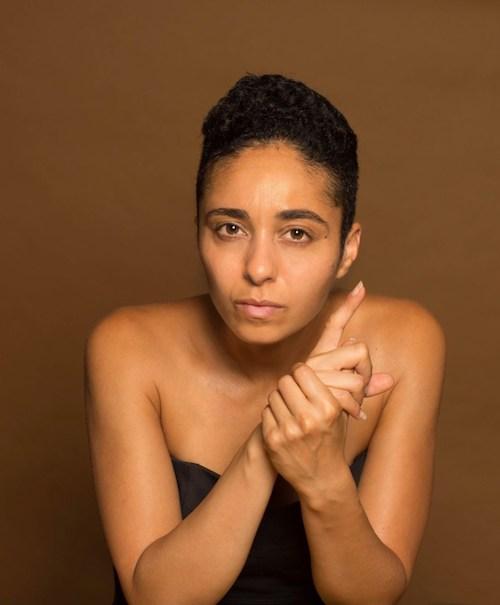
I’ve been to The Ford many times, but it’s the first time I’m making work for the space. My piece is going to be minimalist and would be a lot about the human body and the sensations of all of us. Our eyes and our ears are the extent of the space [which] is mainly what I’m researching and using. Even in this open, beautiful space I’m trying to stay very focused, not to make any grand gestures. I feel at this time it’s better to focus on the individual.
I’m not celebrating the size of the stage — I’m more reducing it to zoom in on the performer. It’s not going to be a spectacle that is about electricity and tricks. It’s going to be about what human expression in the most basic naked options could be, which is less common in the opera world. I’m curious about the ability of opera to be bare. I believe in it. I can feel it.
I think the talent is in the voice, the singer, the notes, the original piece of art, and I want to believe in the purity of it and the nakedness of it, but still have a duet with that. As movers and dancers, it’s a duet with the sound and with the music. I think it will be informative or how would I say, not informative, but captivating. But it won’t be because it’s a spectacle or any waste of funds or time.
For most humans, it will be their first concert since the pandemic, the first time we’re coming together for a show in the old way. I think it will be very exciting for all of us. I can imagine the dancers who couldn’t see an audience for so long — the light when it hits your skin and it goes through the space, you know you’re on stage. There’s a certain level of adrenaline [that] Zoom doesn’t give you so I wanted it to be as basic and as bare as possible.
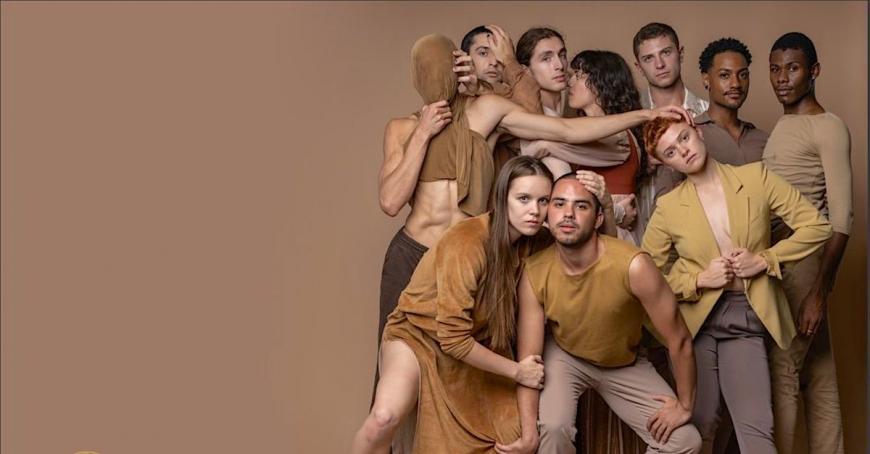
During COVID, you and Ate9 forayed into films with An Apology, directed by Collin Del Cuore. Written by both of you, the film delves into our collective isolation and the need for human contact and has been making the rounds of film festivals, including the Montreal Independent Film Festival and the Maine International Film Festival. Will you be doing more films in the future and how has this changed your approach to choreography?
Yes, I think I’ll be doing more films. I think it’s relevant and I remember Glenn Kotche telling me a really smart comparison: It’s like a band does a record and then they do a live performance. If we can do some films and then do live performances, that can be a great tool of marketing. I want to continue with another in 2022 with a great team of musicians and designers, but at the same time there is nothing in common between film and live performance and composition is composition — you frame the stage.
As long as you have those tools of aesthetics and timing — that’s why I was involved in editing, I wanted to control the tempo — the director provided an aesthetic that was spot-on with the emotional gravity of the film. I think that you know when it’s boring on the screen and boring when it’s live.
It’s opening another section in your brain. It’s not all inclusive. It’s another set of skills to direct for the camera and that’s probably endless and I’m at the very tip, the beginning of that potential. It’s good for the brain to find new challenges.
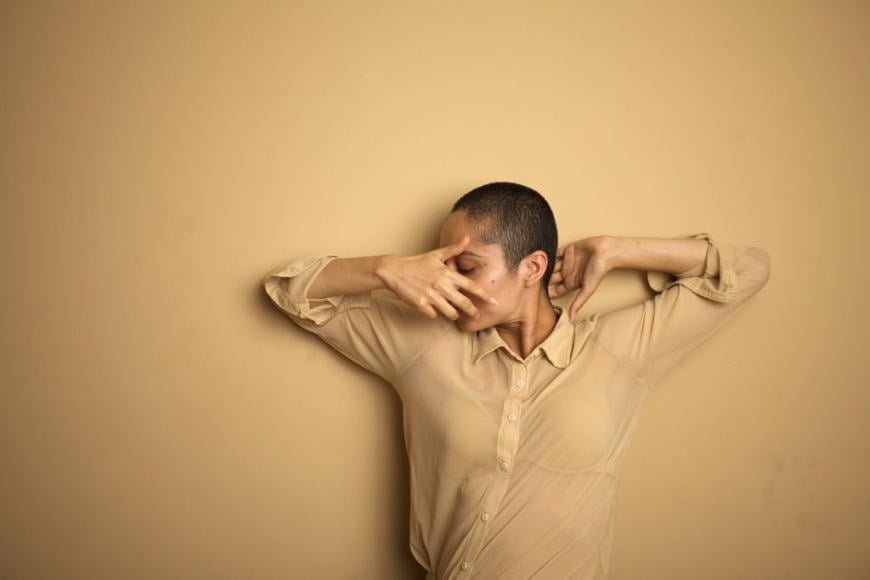
On August 25, Ate9 will participate in a festival taking place at New York’s newest, hippest spot, Little Island — and you’ll even be performing. But looking beyond that, where do you see yourself in the next five to 10 years?
I see a piece of land with a lot of greenery and maybe a great studio attached to the property and probably continue meeting some kind of audience or community, but I don’t know where in the world where this place will be. Maybe America is the place, maybe L.A. is the forefront of change. Maybe things will get better, but if they’re not, it’s important for me to relocate and continue a healthy lifestyle.
I think a lot of artists want to just change their ways and match whatever the current fashion is; for me it’s important to do things I feel connected to, not because they’re fashionable. Maybe I can’t change the world, but I can change my immediate surroundings. How can I keep doing what I believe in and still be relevant? Whatever is flexible and changeable is interesting for me. If things are stuck, if they’re conservative or stubborn, it’s not interesting for me. It just depends how those boundaries expand and if they stop expanding at some point, it’s time to go somewhere else.


